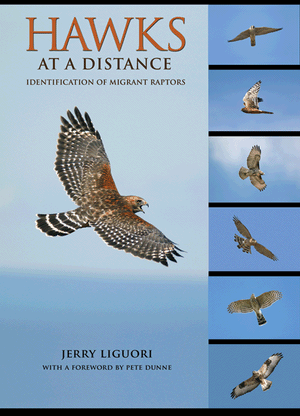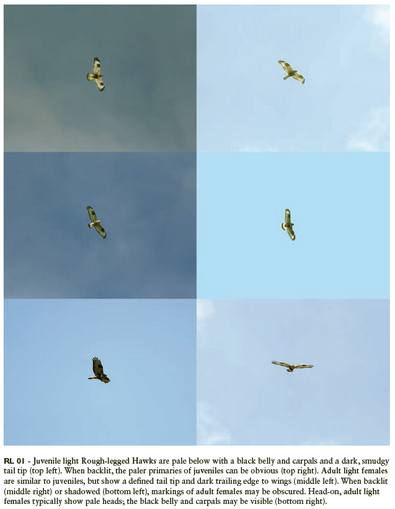 When I saw the title of this new guide to North American raptors, my mind immediately jumped to the Monty Python sketch "How to recognise different types of tree from quite a long way away" (Number one - the Larch...) So, is this book just an excuse for a collection of fairly distant photos?! Surely we could all produce a book along the lines of "Small Fuzzy Dots in the Distance"?
When I saw the title of this new guide to North American raptors, my mind immediately jumped to the Monty Python sketch "How to recognise different types of tree from quite a long way away" (Number one - the Larch...) So, is this book just an excuse for a collection of fairly distant photos?! Surely we could all produce a book along the lines of "Small Fuzzy Dots in the Distance"?
Well, of course not. The idea behind the book is that raptors are regularly seen at long range, whether on the breeding grounds or from migration watchpoints, a major feature of raptor watching in the USA and indeed in other parts of the world. Having a book showing pin-sharp photos of flying raptors at close range is all well and good, the author argues, but this may not help as much as one might expect in terms of real field identification.
The book covers 29 species of North American raptors, although the amount of detail varies considerably, from a 17-page account for the widespread (and variable) Red-tailed Hawk, down to less than a page for Short-tailed and White-tailed Hawks. Five species that breed in the USA (Snail Kite, Common Black Hawk, Harris' Hawk, Grey Hawk and Aplomado Falcon) are omitted altogether. In general, the focus is very much on the common and widespread species and, especially, on those that might be encountered on migration. I was pleased to see a page of flight photos of Californian Condors, however!
 The photos are almost all taken by the author and are well-selected to illustrate a wide range of views of each species, covering differences in viewing angle, lighting angle, flight modes, ages, sexes and colour morphs. They are indeed photos deliberately chosen to be "at a distance" however, and so do give a good field-feel. Not all the pictures are at a distance. Each main species account begins with a fine close-up portrait, that of the Rough-legged Hawk being particularly stunning! Each species account also includes a section of text, in which the experience of the author really shines through, covering key field identification tips. Moreover, at the beginning of each group (Accipiters, Buteos, etc) there are further notes discussing comparative differences between the species in that group.
The photos are almost all taken by the author and are well-selected to illustrate a wide range of views of each species, covering differences in viewing angle, lighting angle, flight modes, ages, sexes and colour morphs. They are indeed photos deliberately chosen to be "at a distance" however, and so do give a good field-feel. Not all the pictures are at a distance. Each main species account begins with a fine close-up portrait, that of the Rough-legged Hawk being particularly stunning! Each species account also includes a section of text, in which the experience of the author really shines through, covering key field identification tips. Moreover, at the beginning of each group (Accipiters, Buteos, etc) there are further notes discussing comparative differences between the species in that group.
At the end of the book, there are a series of 19 plates containing over 40 small monochrome photos of the common species from almost every angle imaginable. These are a little over-powering at first glance, but are useful in portraying the much wider range of flight shapes shown by each species than is illustrated in a typical field guide.
This is a worthwhile book if you're watching raptors in North America, and is a sensible size to take and use in the field. There is clearly a degree of overlap with raptors elsewhere in the world (Peregrine, Osprey and Golden Eagle, for example, are all very widespread species), but an equivalent Western Palearctic guide would be extremely useful for birders watching the raptor bottlenecks of Falsterbo, Eilat, Batumi and elsewhere. Alternatively, it does occur to me that although this book does convey to the reader a great amount of the field-jizz of these species, this is still not the whole story. The missing element is movement; the speed of the bird, the tightness of its thermals and the frequency of its wingbeats are all of huge importance in flight identification of raptors. Perhaps the next step is to produce a digital book, for an iPad or similar, with video incorporated too.
You can help support BUBO Listing by buying Hawks at a Distance through the BUBO Store.
